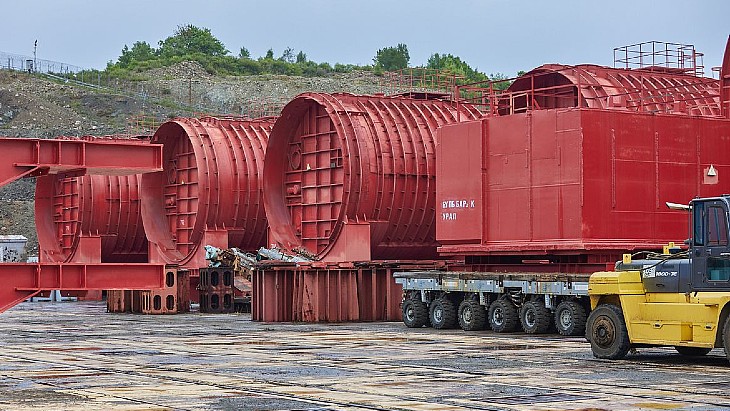Nuclear Window project gathers pace
Russia's Rosatom and the European Bank for Reconstruction and Development have announced milestone dates for two projects in their so-called Nuclear Window program.
Russia's Rosatom and the European Bank for Reconstruction and Development (EBRD) have announced milestone dates for two projects in their so-called Nuclear Window program.
The announcement followed a meeting in Moscow on 8 October between Rosatom officials and the bank's joint secretariat.
Nuclear Window is part of the Northern Dimension Environmental Partnership (NDEP), which originates from the European Union's Northern Dimension Initiative to promote cooperation between countries of the Baltic and Arctic Sea regions. The objective of Nuclear Window, which started in May 2003, is to provide funding for projects that will mitigate the legacy of the operation of nuclear-powered ships and submarines of the Northern fleet in Russia that are at different stages of decommissioning.
Lepse
Rosatom said today that the Lepse nuclear service ship will be put into dry dock at the Nerpa Shipyard on the Kola Peninsula, and the process of dismantling it - into five parts - will start in December and continue throughout 2015. Unloading of used nuclear fuel from Lepse will start in 2017.
The Nerpa Shipyard applied to Russian regulator Rostechnadzor at the start of this year for a licence to start work on Lepse, which was issued on 27 June. A specially-designed shelter is to be built for storage of the ship's bow before it is transferred to Saida Bay in 2017. Used nuclear fuel on board the ship will be transported to the Mayak Chemical Combine in the Urals via the Atomflot icebreaker port in Murmansk for reprocessing. Lepse was moored at the port for 20 years until 14 September, 2012, when it was towed to the Nerpa Shipyard for decommissioning. It has awaited a dry dock ever since.
Delays to Lepse's move to the Nerpa Shipyard included disagreement, according to local media, between Rosatom and the Defence Ministry over the fate of the Leninsky Komsomol, Russia's first nuclear submarine. The ministry finally said it would convert the submarine into a museum, thus making way for Lepse to move into the dry dock.
The EBRD issued in August a general procurement notice for the unloading of used nuclear fuel and the retrieval of radioactive waste from Lepse. Rosatom said today that the tender will be in two parts, with the first taking place on 29 October and the second during 2015.
The project, which the EBRD estimates will cost €50 million ($64 million), includes: development of infrastructure at the Nerpa Shipyard; construction of the containment shelter; placement of Lepse on the slipway of the shipyard and establishment of a used fuel compartment; placing that compartment within the shelter; establishing a used fuel unloading station and a station for loading used nuclear fuel into canisters.
Andreeva Bay
Nuclear Window also includes a project to establish a system for the handling and transport of used nuclear fuel at Andreeva Bay in north-west Russia. The EBRD issued in August a general procurement notice for the development of the used fuel assembly removal technology and radiation surveys; the design, manufacture, installation and commissioning of the facilities required for the recovery of six used fuel assemblies from the pond in the pool-type storage facility; used fuel assembly removal operations; site operator services, including improvements of the radiation and physical conditions of the site; international consultant support; and infrastructure improvements. The estimated cost of this project is about €4 million ($5 million).
The EBRD also issued in August a general procurement notice for the design, construction, manufacture, installation and commissioning of systems and equipment for moving casks weighing up to 40 tonnes, as well as the design, supply and installation of a transformer station for Andreeva Bay power supply. It estimates this work will cost about €60 million ($77 million).
Rosatom said today that a berth crane had been delivered to the bay in September and would be installed by the end of this year. A contract was signed on 29 August, it said, for the supply of a vehicle for the transport of used nuclear fuel from storage to the dock. The vehicle is to be delivered by the end of this year.
Researched and written
by World Nuclear News
_17992.jpg)
_75800.jpg)











